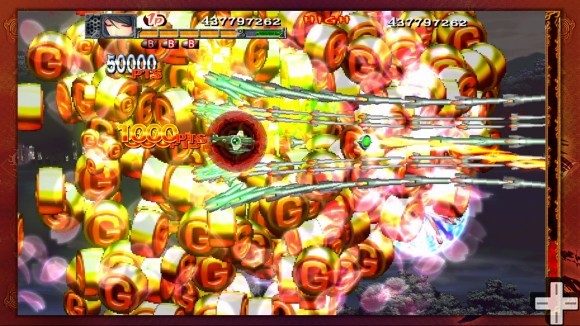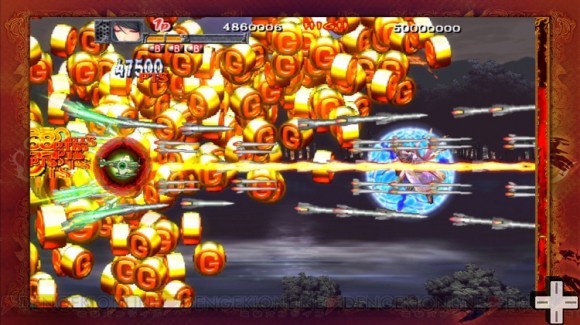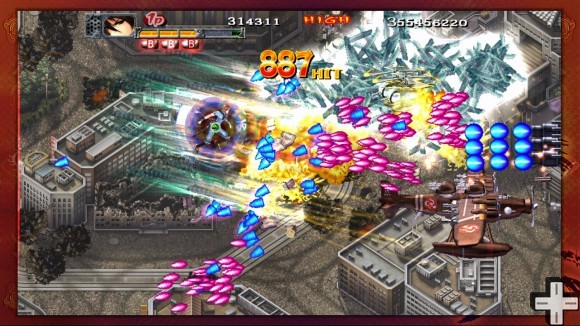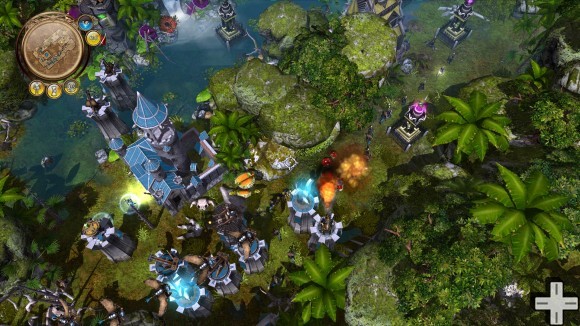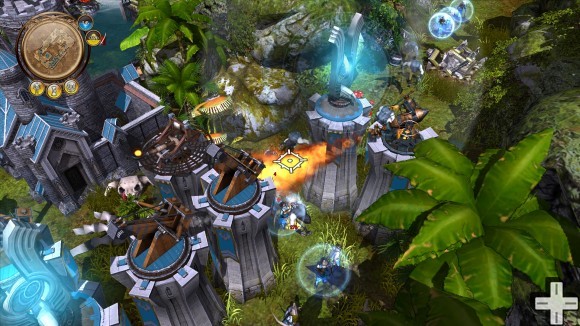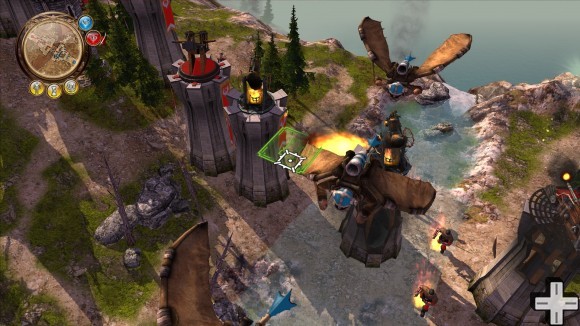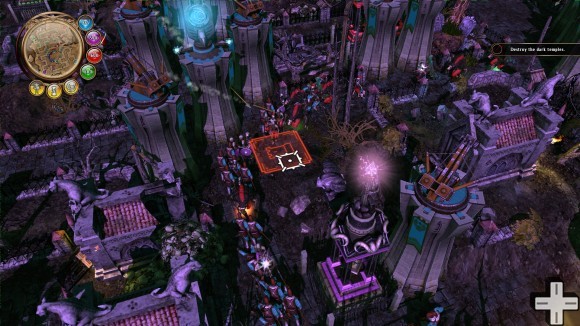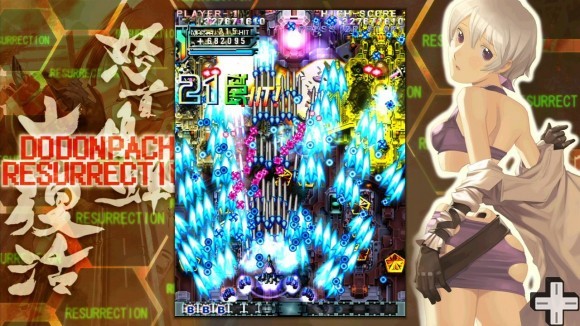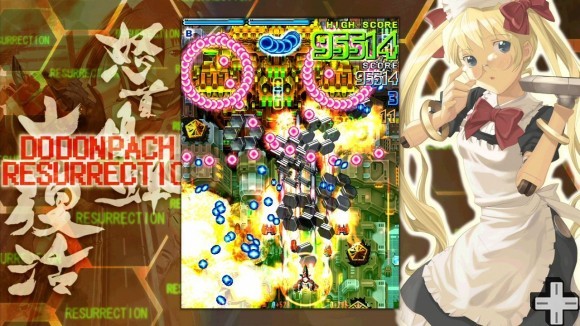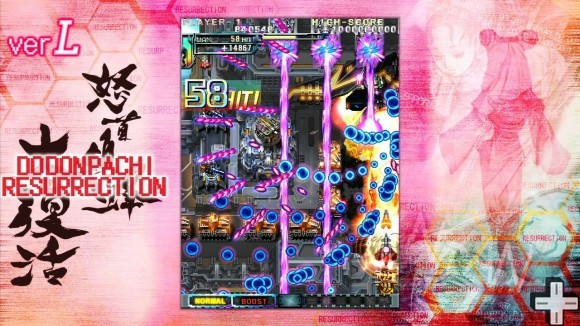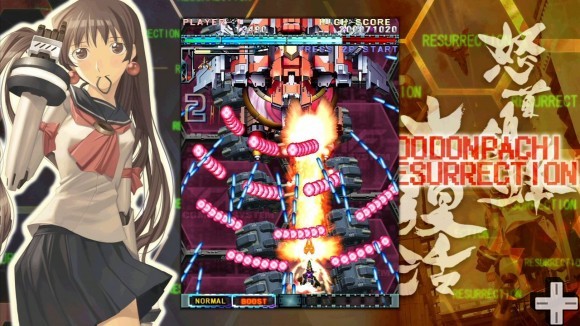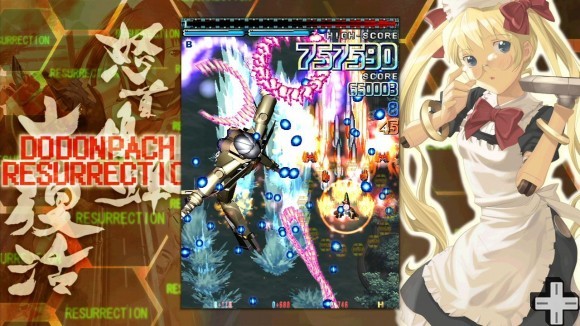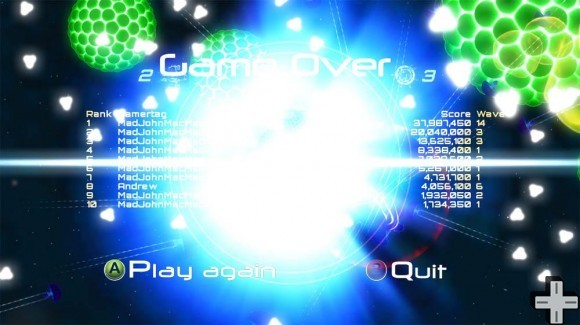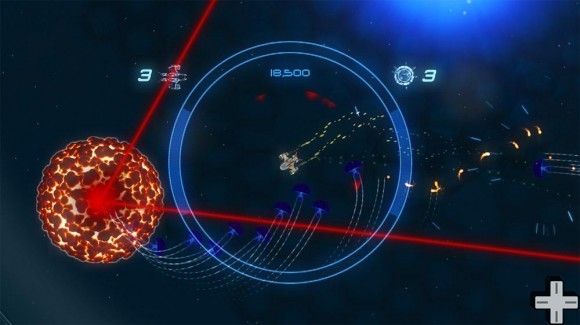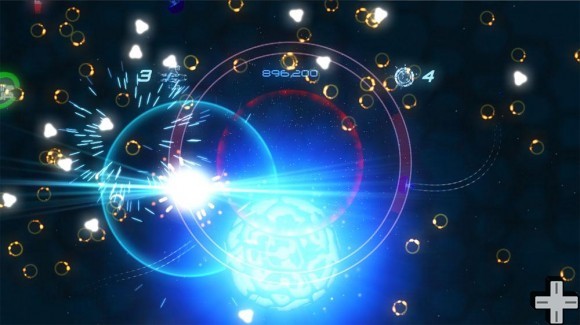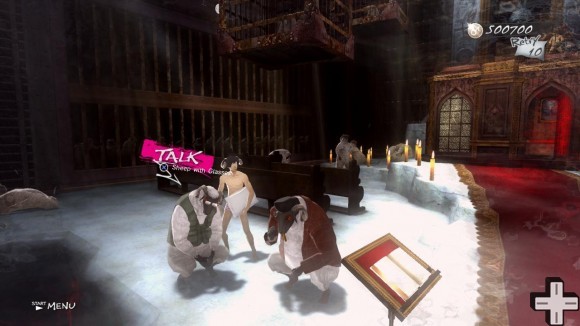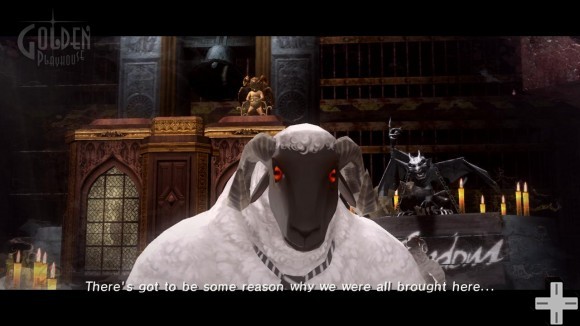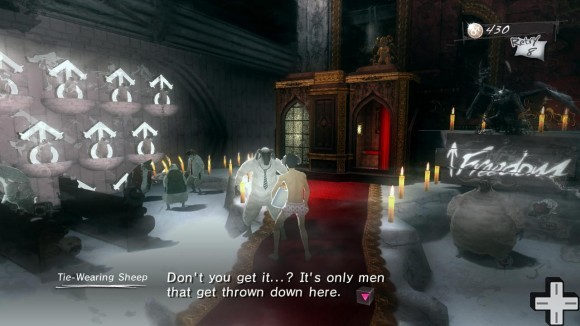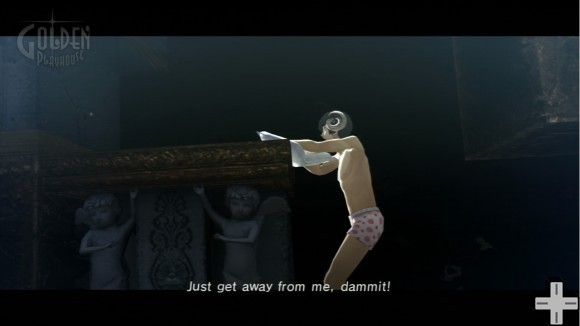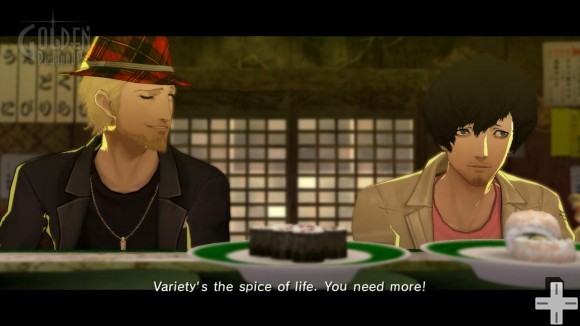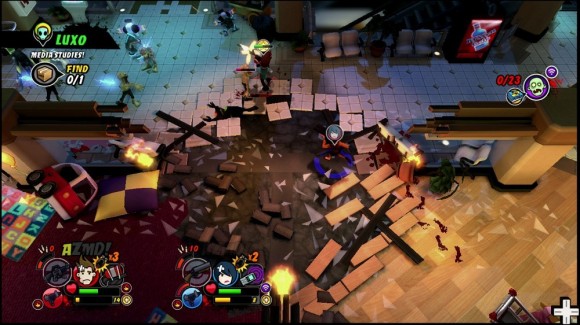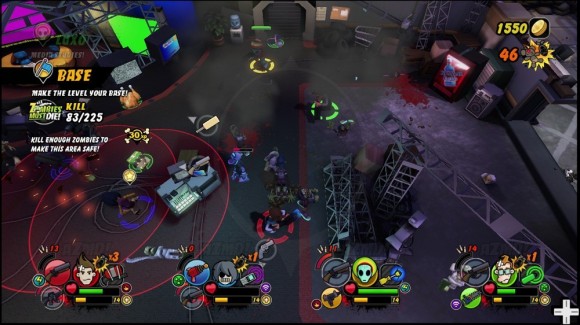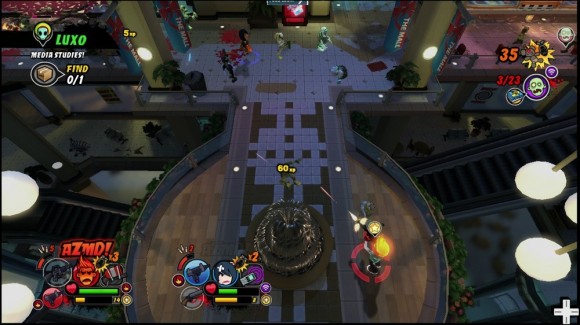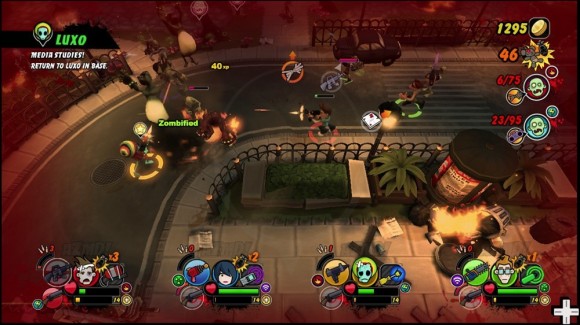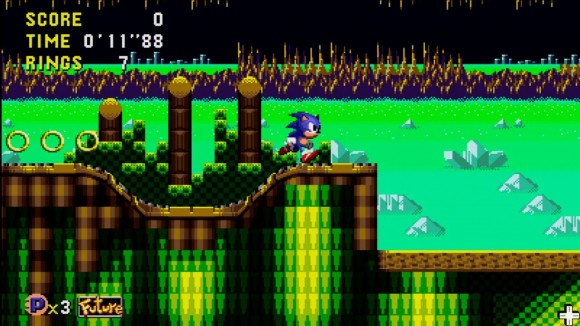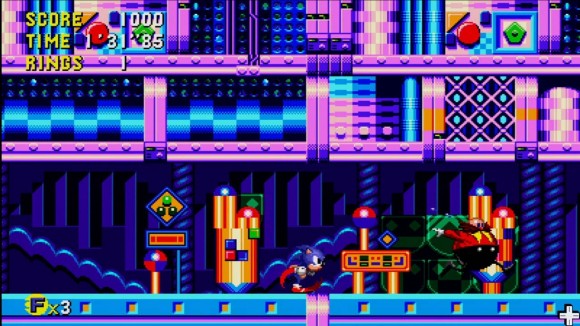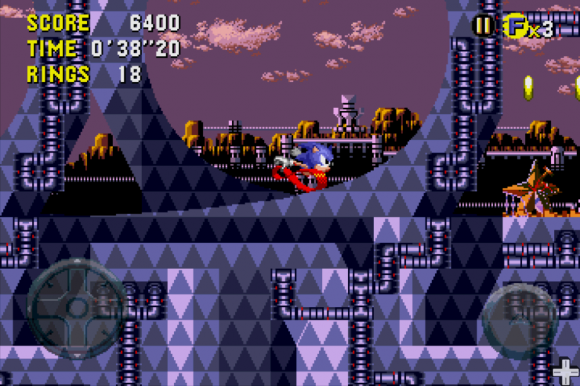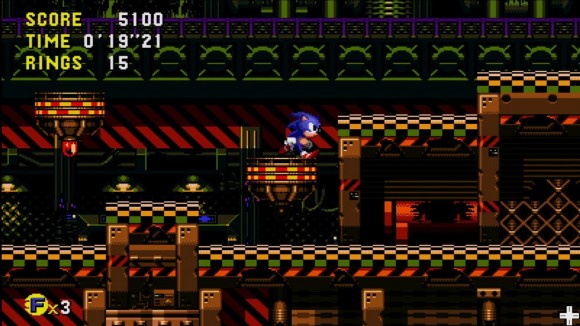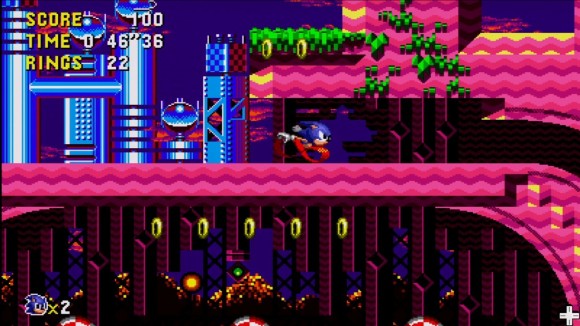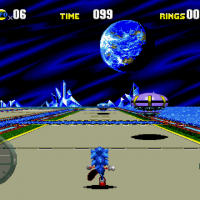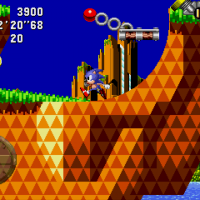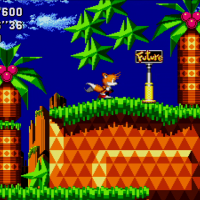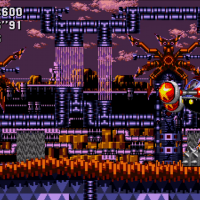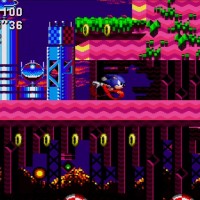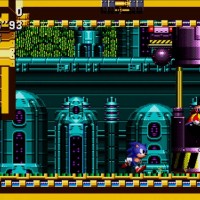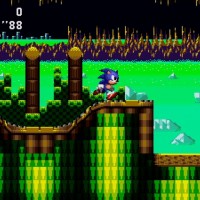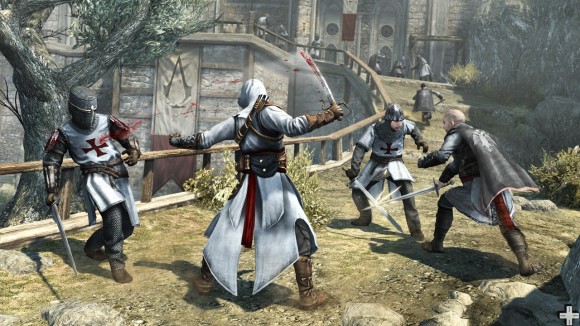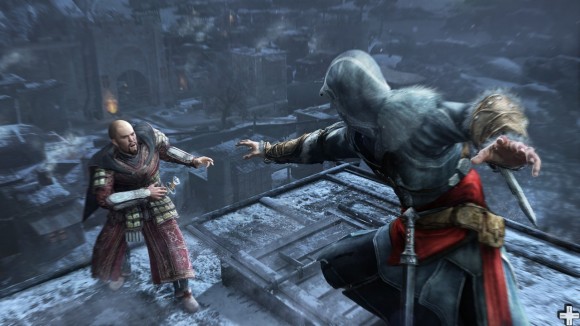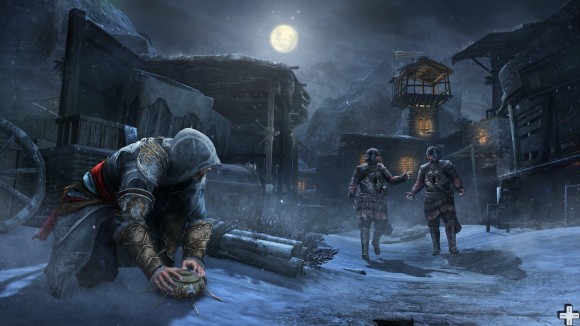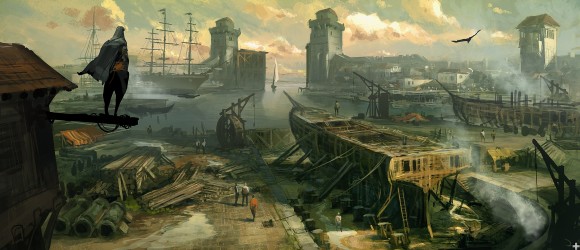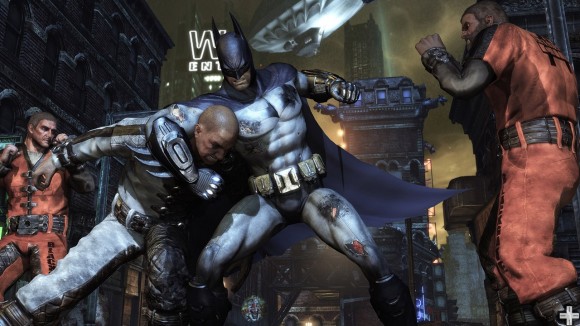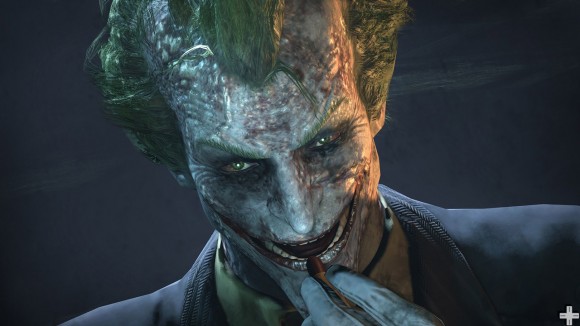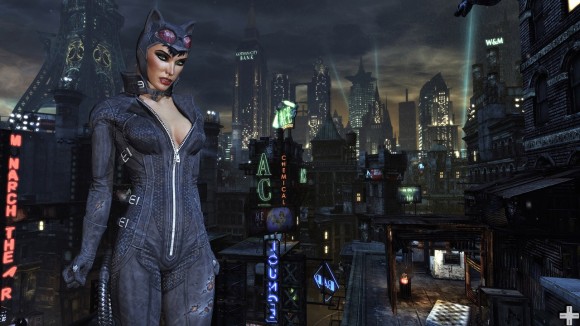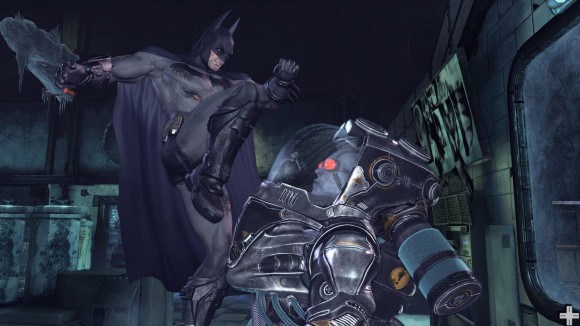Akai Katana


Shootings things and travelling super fast in space ships that aren’t actually in space is something that many of us dream about, frequently. After all, being able to control a spaceship like Yukinojo or Ryo-oh-ki would be awesome, a sort of awesome that’s beyond all reasonable understanding. Mix this into an attack on the eyes in the form of fireworks and you’re left in a world of good, where nothing can hurt you.
This isn’t that place, it’s a place where an assault on your visual senses will touch you and leave you for six. Yes, Akai Katana is the latest shump from the Japanese developer Cave and it’s just as pretty, just as aracdey and just as difficult as the last one – DoDonPachi Resurrection. The main difference is that in Akai Katana rather than there just being a single real mode of play, this time around there are three.
For the uninitiated, Akai Katana will seem like a painfully short game. It doesn’t actually take long to shoot your way through the levels and even with a few deaths along the way it’s pretty basic; yet, by playing the game in this fashion, the key element to this game is being missed out on. Bragging rights. Akai Katana is essentially an arcade game that’s been ported over to the Xbox 360 and during the port, the developers at Cave have added in a respawn feature that didn’t appear in the original.
The constant availability of the continue has taken away the challenge from all gamers. Akai Katana is all about the highscores, even using one of the three available lives will destroy the highscore and for gamers who care, it means that the game is hard. Match the want to be the best with the Achievements, like getting 15 million points in the first level, it makes the game not only a challenge but addictive.
Unfortunately the continue has removed the fun as all you need to do is hit start and you can carry on playing. Whilst the score has disappeared, for an average gamer who’s not used to this style of game, they’ve suddenly dropped £30+ on a game that’s over before it’s began. Although there may be three modes of play, each mode is very similar to the last and the levels are all basically the same, it’s the subtle differences that the initiated will notice.
Setting aside the strange additions, the game itself is an absolute joy to play. The controls are responsive, easy to learn and it’s super easy to navigate around the screen. There’s a few questions as to why the different modes of play aren’t clearly advised or why the co-op mode is also hidden away and not clearly called: co-op mode.
Yet the strange naming convention isn’t a real reason to not enjoy Akai Katana from the off, it’s a breeze to play through the first time around. Then you start committing the bosses, the level structure and even the patterns of the attacks to your long term memory and your points start to rack up and suddenly 15 million is a puny number and it’s something you can achieve without really trying. Once this has happened, it’s time to start collecting the Achievements.
The Achievements are really what make Akai Katana a game that you’d want to replay. For most people who don’t “get” the game, they’re just going to be something that’s next to impossible to achieve. For those who put some effort into the game, it’s something to work towards. Especially if this is the first Cave style shump that’s been entered into your Xbox 360.
Graphically the game is beautiful and the engine is amazing. The ships and enemies are all unique and enjoyable to watch fly around the screen. Some hail to Russian made war machines, others are more futuristic but throughout the carefully crafted, pixel perfect, sprites are easy to watch and you never lose your place. More impressively is that with a vast array of coloured bullets floating around the place and literally consuming more screen than the backgrounds at times, there’s next to no slow down. An impressive achievement all things considered.
Akai Katana is a not a game for quitters, if you’re easily frustrated by repetition and don’t want to put the time into a game it’s not for you. If however, you enjoy a carefully crafted title, that’s trying to push you to the next level then it’s well worth the buy.
Defenders of Ardania

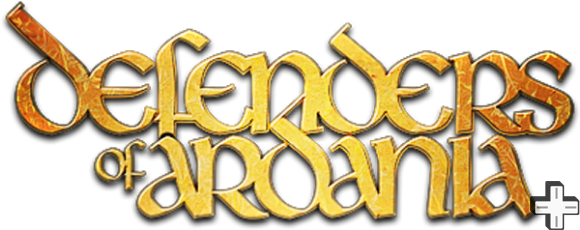
Age of Empires. It’s a PC and a Nintendo DS game, that’s been around for years now. Many years. So many in fact that it had a spinoff series called Age of Mythology, which was equally as brilliant as the first two games and subsequent expansion packs. The third, well, that’s for the jury to decide. Either way, Microsoft managed to define an entire genre of gaming with this series. So it’s hardly surprising to hear that a game has played “homage” to it, yet Defenders of Ardania, an Xbox Live game takes a very different angle at the word “homage”.
Defenders of Ardania is primarily a tower defence game. Tower defense games have only recently started to appear on console games and the majority of the time comes as downloadable games, rather than physical releases. So it’s forgivable if the term doesn’t just flow off of the tongue. The tower defence genre is a sub-genre of the real-time strategy (RTS) genre and very simply, puts the emphasis of attack and defence on Towers, rather than armies, zombies, militia or “units”.
Defenders of Ardania takes the genre up a little and adds in elements of the traditional RTS world, by sending waves of different types of unit to attack the enemy, on command and also adds in a board game element. The board game element is essentially a grid system, which divides the level up into zones, it allows you to easily see where you can build a tower and how you can try and make life more difficult for your opponent.
It’d be great if it were that simple, unfortunately there’s a steep learning curve on how to build towers and generally understand the world of Ardania. This learning curve becomes apparent in the tutorial, whilst the first two or three levels are pretty basic there’s suddenly a massive spike and most vitally, a huge lack of information. You’ve been told how to create units, towers, what the special zones and even how to assign towers or units to attack a single enemy. Yet, no-one’s advised that only certain types of units can attack enemies so whilst you’re bashing away the X button trying to deploy a myriad of dwarves, militia, heroes and who knows what else, none of them are attacking.
This is something that’s a huge flaw in the tutorial and unfortunately this sort of random distribution of information continues throughout. Not quite to this level of irritation, but enough to notice it. Not only that, but due to the nature of the way units are deployed the game will hit a dull stalemate very early on. This much becomes clear from the tutorials, where after creating all of your ten Towers to defend and attack, all you do is start deploying units to attack the enemy castle. Luckily it’s not a turn based game, otherwise to complete a single level would be half a day, but even without a turn system sending units off to battle is a tiring and dull thing to do.
This is made even more labourious by the advent of magically being able to rebuild your castle part way through the game. Of course, being able to repair is great, but it leads to increased game time and unfortunately this mechanic just helps to increase the overall frustration of wanting to complete a level but not being able to. Especially when playing against other players.
Set in a medieval, Lord of the Rings sort of time, the game looks great. There’s clearly been love and attention lavished on not only the character art, but the script and the textures of the game. Although, naturally, some of the look is a little generic as the entire setting of the game is a little generic. The music isn’t much to shout home about, but one thing of note is the voice acting for the narrator. Whilst it’s clearly meant to be an accent, it’s not a distinguishable one and he sounds a little like a drunken Sean Connery. Off putting and irritating, especially when combined with the various other bad points of the game and the inevitable nature of having to repeat a level.
Defenders of Ardania is easy enough to get your head around; the controls are pretty simple and work well the majority of the time. Even understanding how the game is divided into separate grids and how the units will always take the fastest possible route to the opponent’s castle – even if it is through a Tower infested hell, makes sense. However, the lack of fun and sheer frustration everything combined together creates doesn’t make any sense at all.
DoDonPachi Resurrection


Time paradoxes, they’re always fun. Some people don’t want to understand them; others understand them only too well and point out the flaws in every paradox ever seen. Whilst Futurama might get it right by killing everyone off who ends up being in a paradox, the creators of DoDonPachi Resurrection don’t care about such things. After all, what can a paradox do to someone with a space ship that can shoot at the speed of light, piloted by a cyborg and flies over earth and time?
DoDonPachi Resurrection is just one instalment out of many from Cave and whilst it echoes back to a time where you didn’t necessarily have to think to play a game. It manages to capture the imagination of gamers not just in the increasingly challenging environments it presents but also in the colourful and arguably beautiful display of missiles that fire around the screen.
It’s a sight to see in the Western world and moreso a sight to see at all as where many Japanese and Western developers are struggling to keep up with the pace of the ever changing gaming market, Cave, have managed to become more successful from this transition into the digital and mobile world. Originally released in the arcades of Tokyo, the DoDonPachi style games were literally a hidden world where gamers would add hundreds of yen to arcade machines to continue being destroyed by what some would argue to be impossibly challenging games.
In more recent times they’ve started to move over to the mobile gaming world, the downloadable world and a more traditional release with the game. DoDonPachi Resurrection isn’t a title for everyone, it’s very repetitive and whilst it does have challenge, it requires a degree of experience and skill before the challenge becomes obvious. It really thrives on the need for gamers to want to get Achievements and complete the title to its full. It’s very easy simply to fly though the various levels, try not to get killed too many times and kill the flying enemies around you.
Playing DoDonPachi Resurrection in this style kills the game. It’s all about trying to navigate a ship around a world that’s trying to be changed by evil robots. Set in the future, after many battles, the culture of the time have become so advanced that they decide to go back in time to try and correct mankind’s mistakes and it’s the team’s job to stop this. History should stay as that – history. So as the defender of the past, it’s time to fly through the past and frankly destroy a large part of it.
In what could easily be described as a kaleidoscope of bullets, a cornucopia of colour and an art to not be murdered. For those who are new to this style of game, it’s as much about storyline, plot and graphics as it is about creating beautiful and interesting bullets. There will literally be hundreds of bullets on the screen, in various colours and will explode like fifty types of fireworks at the same time. While you’re trying to shoot down the creatures creating these attacks, you’re equally as unusual attack patterns and trying to navigate the core of the ship around this.
Whilst at first it might appear that it’s impossible not to die, all it really takes is a keen eye and a steady thumb on the joypad. The key to success is to ensure that the centre of the ship avoids any direct damage and to keep an eye on the sceneary below as it will often lead to unknown paths and unlock achievements and in some cases, different endings.
The game is presented with stunning visual displays, but the textures and graphic packs outside of the bullet storm really isn’t overwhelming. Whilst it’s not appalling, it’s certainly nothing to shout home about. It’s clear that the effort in the game has gone in the background wallpaper around the game screen and the stunning effects of shots.
Yet the soundtrack is great, simply brilliant. Whilst there’s no voice acting, singing or anything in the way of a lyric, it plays to the strength of this retro style title and has plenty of synth and futuristic, sci-fi effects. For a classic gamer, it feels like home, but with more than what a simple MIDI track could produce in the 90s.
Unfortunately, a fair chunk of the game is missing as it has to be downloaded for an extra fee via the Xbox Live. This isn’t clearly mentioned at any stage in the manual, the back of the game or even whilst playing. Now, not downloading the extra content won’t prohibit any part of this title, but it does make the game a lot shorter than it otherwise would be. Fortunately DoDonPachi Resurrection is a budget title, and even with the additional cost of the downloadable content, it’s still a very good buy.
DoDonPachi Resurrection isn’t a throwback to a by-gone era, it’s taken what was once the height of subversive cool and reinvented it for a modern audience. With a great soundtrack, visual displays of bullets that look like fireworks and easy controls, it’s a gem. Especially at the budget price.
P-3

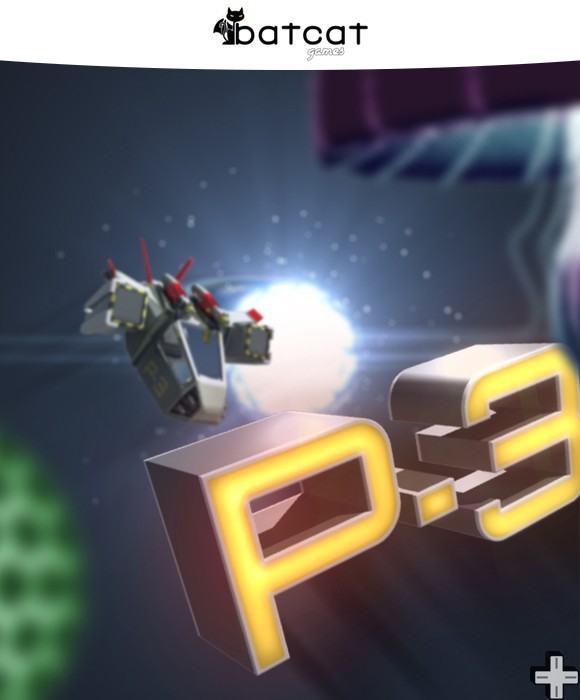
Asteroids, it’s a videogame that’s existed for longer than some people’s living memory. A game that’s well over 30 years old and still manages to hit the Top 100 videogames list on a regular basis, so it’s inevitable that over the years there would be a clones created. Yet, to say that P-3 is a clone of Asteroids is an unfair and unjust comment. It’s certainly been inspired by the 1979 Atari classic, but it’s taken the best bits of Asteroids and created something that has the potential to surpass it.
Whereas Asteroids, Space Invaders and most shooting games take place in space, P-3 takes this to the next minute level. It’s managed to acquire some form of alien-grade technology and allow us to see down to the tiny atom level and see the tiny nano-ship flying around a Petri dish defending a nucleolus from attack from hordes in evil, invading bacteria. Yes, P-3 has moved the genre under a microscope and left space to the future.
So whilst the storyline might be out of a sci-fi novel, the gameplay is far less inventive. To be fair, the storyline isn’t actually explained “in-game”, P-3 starts where it finishes, in the Petri dish with an option to bypass the brief, but helpful tutorial altogether. As with all games of this type, the difficulty is staggered and whereas some games of this type have random spikes in difficulty, P-3’s gradient is very gentle.
Almost too gentle, even if the tutorial is skipped, the game isn’t hard to play and there are plenty of power ups littered across the Petri dish. Which are either bombs, ways to increase speed, ways to improve the weapon and naturally there’s the medipack. The most effective and useful power ups are the medipack and the weapon upgrade, a skilled pilot will not even need to collect a medipack as the weaponry makes such as significant jump it’s almost impossible to die early on. Whilst the nucleolus has to be left alone to collect these valuable items, the onscreen map clearly identifies when an anti-body is getting a little too close to the nucleus. That and if the nucleus is left alone for a bit it’s not the end of the world as it has plenty of life anyway.
The nucleus has it’s own protection mechanic and whilst it takes some time to get used to, it’s also self-damaging so it must be used with caution. At first it’s hard to tell what’s happening due to the way the weapon is shown, but this is mostly due to the presentation of the game in it’s sci-fi science world rather than a graphical complaint. The visuals, whilst not an epic SquareEnix masterpiece, are solid sci-fi and compliment the title well.
The longer the game is played, the higher the score gets and whilst this would be great if it were a multiplayer game, or even had an online leaderboard, P-3 is all about the solo play and this automatically takes away some of the fun. Games with insane high scores are all about bragging rights and the lack of a leaderboard has removed this, coupled with the lack of Achievements and P-3 is missing it’s key audience.
This is disappointing as whilst P-3 has used the standard twin-stick controls, it’s been done with finesse and a polish that makes it stand up and be noticed. The controls are brilliantly tuned and whilst the difficulty curve is just a little on the easy side, once a few levels have passed it does become increasingly challenging. This is coupled with well designed graphics, makes P-3 a game that should’ve been a great game, but failed as the audience was missed.
Catherine

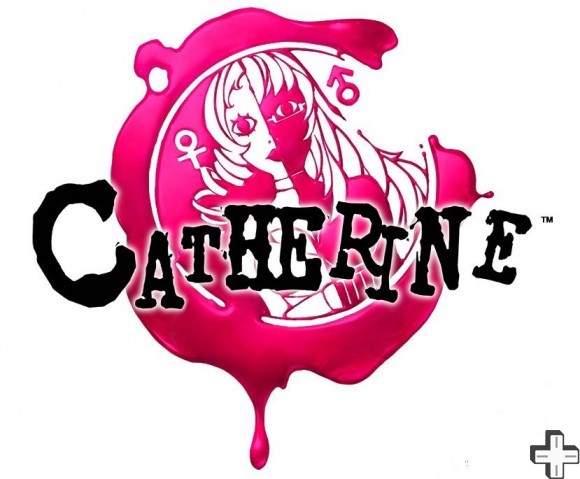
For months now, the gaming industry has been swamped with samey, apocalyptic third person shooters and predictable RPG sequels. Now it is time to welcome an entirely different game to the fore. The old, tired rhetoric of past games may now be cast aside by the wonder that is Catherine. The experience Catherine provides is one that will be remembered for years to come.
Catherine tells the story of a 32 year old man, named Vincent Brooks. Brooks spends his days slaving away in the technology industry and spends his evenings getting ‘chateaued’ at the local bar with his friends. A nagging but caring soul, his girlfriend has been with him for many a year, she is named Katherine. Katherine has been pushing at Vincent to take their relationship, of late, to the next level. So she prods and pokes at him to solidify their relationship but he remains unsure.
Suddenly, and rather miraculously for him, a young, sexy Catherine enters his woe-betrodden life. After a night of drunken ‘wink wink, nudge nudge’, Vincent wakes up next to Catherine, a stunning, naked blonde. As most people would, he feels regret and enters a quest to find the way out of his, ahem, sticky situation he has created for himself. At the same time, he is doubtful about Katherine and thoroughly intrigued by Catherine. The situation plunges him into a plague-like sleep whilst he struggles with both women. These nightmares make up the core game-play of Catherine and each provides a tantalising new puzzle.
Catherine’s plot is unusual, it is unique and that is its main draw. This game can be seen as a throw-away feminine exploration as it deals with two issues not touched upon in the ‘masculine’ world of gaming; a fear of committing and the ability to cheat on a loved one. However, Catherine is very good at placing players in the position of Vincent and enticing you into empathising with his every decision; however, this game is more than the plot. The game-play affects how you discover more of the story. Game-play is mainly based around a difficult puzzle plot, minutes of conversations to become enthralled in, choices to make in Vincent’s daily life and an all-important morality system that is ever changing, morality levels are different every time you play – making this a re-playable adventure.
Set over a week’s worth of days and nights, Vincent has to be guided through each of them. The only problem is sometimes they can become a bit monotonous. When the cut scenes have ended and you have been introduced to a new day, you’ll predictably find Vincent in the The Stray Sheep bar with his mates drinking his life away. The Stray Sheep becomes the centre of activity in the game. Here, it is possible to pick at people through conversation and figure out why Vincent is having such chronic nightmares; the reasons are parallel to the real world. Basically, once you find out what is happening in the real world, it ties in to Vincent’s sleeping habits and improves them.
When you are bored, quite frankly, of drinking and chatting, Vincent goes home to where his nightmares begin all over again. Catherine’s hardcore puzzles begin in earnest, although each is relatively similar to the last, only the difficulty increases each time the further you progress.
The puzzles consist of Vincent working his way up a tower of blocks which he has to rearrange into a sequence. To make it that little bit more challenging, the game starts introducing heavier blocks, blocks that break beneath you, blocks made of ice and blocks that explode. This is where the players limits are tested to the extreme; each puzzle proves gradually more irritating than the last but it is all the mark of a good puzzle genre. To add to the pure frustration, each puzzle is timed as blocks fall from beneath Vincent, when he needs to remain upwards. Occasionally, there are boss battles thrown in too for funsies.
Each night the player completes a set number of puzzles and as Vincent wakes, is thrust back into the real world to investigate further. As each puzzle is completed, there is a definite sense of urgency to get to the detective-style daytime to find out more details of the plot – the story twists and turns in many unexpected ways, often, players will find that Vincent sleeps a little too much and the story needs to be cracked on with. Undoubtedly, the puzzles themselves and the plot could turn gamers away from this unique genre but as the story progresses each day increases the sense of accomplishment, making players feel like they have genuinely achieved something.
Catherine is truly compelling and provides a great drama with a cast of inventive, highly personified characters that make players want to interrogate them on a daily basis. Vincent’s phone will be bleeping forever more, with both ladies wanting some attention – players can pick from a range of pre-written responses that all affect the morality meter. Also, the day and night aspect of Catherine gives the game its structural appeal. Night-time is drawn out, requiring a tonne of concentration whereas day-time can be spent chatting and relaxing, only taking 10-20 minutes; this change of pace keeps the game fresh and exciting. Miniature puzzles can also liven up Day-time; arcade titles such as Rapunzel can be found in the bar, these are just miniatures of the night puzzles, allowing players to practice their skills for the oncoming nightmares. The best bit of the bar being that the drunker Vincent gets, the livelier he becomes later on.
Despite its cyclical game-play, Catherine offers a reward system for playing. Gold medals can be scored through completing puzzles effectively and quickly, these unlock newer, harder stages to conquer. Although, by now, players would have died a fair few times in Normal mode and lacked a Checkpoint between many levels. Also, Local Multiplayer is only unleashed when the game has been beaten in its entirety, giving players something to look forward to and a challenge to achieve. These little extras only add to Catherine’s worthy value.
Catherine is also helped along by beautiful anime-style visuals that are of top quality animation, especially during the cut scenes. Depth perception and the array of character’s expressions draw the player in more-so to the compelling plot. Night-time has a relatively dull background but Vincent is so busy climbing towers, all the player begins to obsessively see are pieces of puzzle. Accompanied by an eclectic soundtrack that brings the storyline to life, Catherine produces realistic English voice acting. Vincent sounds like a droll 9-5 worker and Catherine sounds irresistibly seductive. During nightmares, the booming orchestral score rips your heart from your chest and mounts the pressure to successfully complete each epic tower. In The Stray Sheep, slower, lounge music is played regularly unless players want to visit the Jukebox where there is a variety of sounds to sample.
The only issue worth noting, when playing on an Xbox 360, is that the game is intentionally made for a directional pad and Xbox pads are notoriously terrible, this leads to minor annoyance but compared to the frustration provided by the puzzles, it’s nothing. The graphics also look slightly worse than on a PlayStation 3 but this does not affect game-play in the slightest; the image just isn’t as sharp. Overall, Catherine is a step in the right direction for game developers. It plays as something strange; with its quirky presentation and enthralling game-play those looking for fun and a sense of authenticity should seek a copy. It isn’t just about puzzles or anime girls – it is so much more. Everything else in the industry pales in comparison.
The Elder Scrolls V: Skyrim

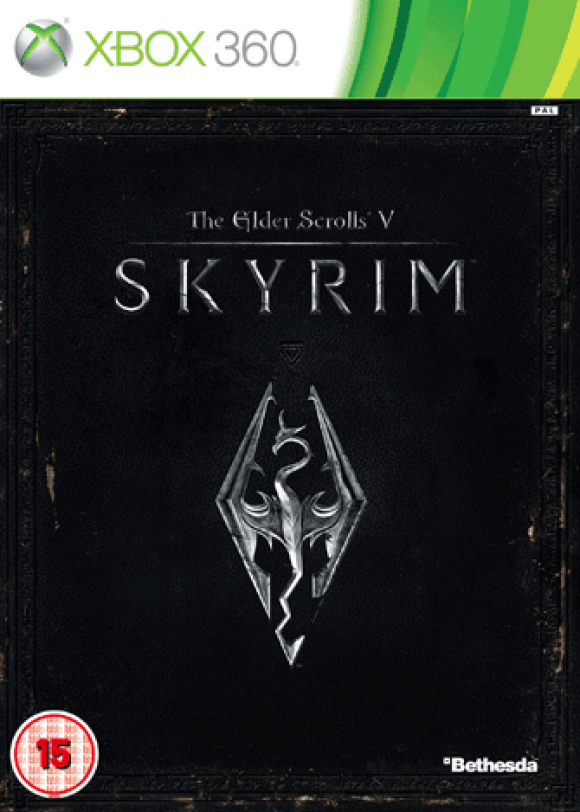
From its humble beginning on MS-DOS in 1994, The Elder Scrolls Series has stayed faithful to its vast open-world role playing, the latest addition: The Elder Scrolls V: Skyrim being no exception. Set in the land to the North of The Elder Scrolls IV: Oblivion’s Cyrodiil, Skyrim is nothing less than magnificent. Skyrim’s main story unfolds around the player’s chosen profession as they begin their quest to defeat Alduin, a Dragon God who is prophesied to destroy the world.
From the ashes of Oblivion and the wastelands of Fallout, Skyrim is a world that is living and breathing. The best part of this is undoubtedly how realistic it feels; it’s surprising that you can’t feel the bitterly cold mountain air on your face. From the broken glaciers on the northern shores to the heather fields of Skyrim’s south, Skyrim is visual treat that is alive. When you factor in the wildlife and people you come across as well – despite the ‘arrow in the knee fad’ – you’ve got a world that isn’t just beautiful but majestic. It deserves an Attenborough documentary.
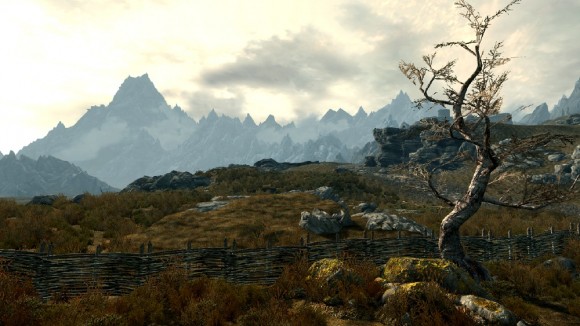
What’s best is within this world you are given total freedom. You can choose any profession you like and create your own personality through the actions you undertake. You could be a Robin Hood character, who hunts with a bow and arrow, steals from the rich and donates to the poor, a cantankerous trader, a vampire or even a werewolf? The enormous customisation available could rival Saints Row: The Third. What’s more, if the weapons discovered aren’t suitable, characters can make their own. Smithing plays a major role in creating new weapons and armoury; then it’s possible to sell them on or keep them for personal dragon-slaying use.
In addition to this, there are scores of quests that will play upon your abilities producing hundreds of hour’s worth of adventuring across cities and dungeons. Quests often spin out from the most menial of conversations, so speak to everyone. Quests also appear from random encounters and books too. Hours can be spent scouring in just one of Skyrim’s libraries, and during that time it is possible to level up a few skills, learn some new recipes to try out in the field and even come across a ‘Choose Your Own Adventure Book’. This contains information on a few Lost Legends including that of the Red Eagle Sword. Needless to say, a few missions, including the one for said weapon, appeared in the quest log.
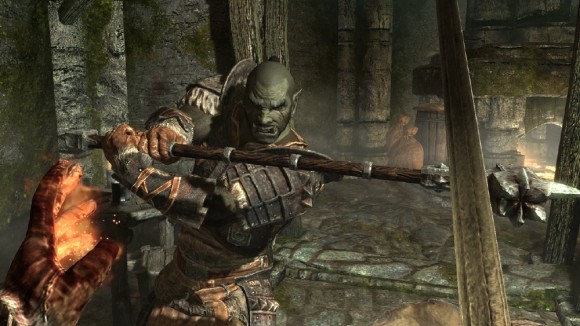
That’s the nature of Skyrim, not only is the world big enough to constantly find new locations, not only is it pieced together with unimaginable beauty, but it’s rammed with meaning. As for the main quest, it is far more sophisticated than Oblivion’s whole story put together. Starting in Whiterun players then have the option to go to Winterhold College and become a wizard or go to Riften and uncover the mysterious Brotherhood. If that doesn’t take your fancy, then why not just head into the wilderness and discover trolls herding mammoths. Respect their personal space and they’ll leave you be. Don’t and you’ll be attacked. All the guild quests have been superbly written too but if you’re playing for these storylines then you are playing it wrong – Skyrim is there to be explored.
The Elder Scrolls subverts expectations by making the primary story something to be postponed and promotes hundreds of incidental side-missions. In those quests you’ll find anything and everything: comedy, betrayal, tragedy, adventure, romance, terror and more. Also, more importantly, the ability to use Dragon Shout for spellbinding results.
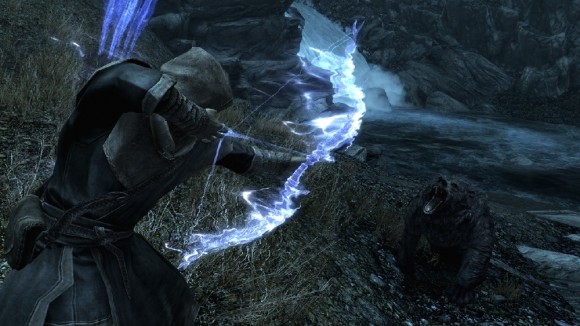
Game-play in Skyrim has been made easier through a quick-select menu. This makes skills, magic, levelling up and items accessible at the push of a button. This is handy when your character is on death’s door about to be mauled by a dragon. The stats screen can be accessed in much the same way, choosing perks has never been easier. The melee combat system also makes Dragonborns more powerful – improved blocking and the use of dual-handed weapons only adds to the ease of combat. If spells are cast in both hands, they can be combined to form ‘overclocked’ versions that are so debilitating they can melt off the faces of foes. The D-pad can be used to access favourite spells and weapons too. For those who don’t like first-person, third-person is presented as an option too. Transporting around the map is quicker than a magic carpet, access the world map and as long as the area has been visited, players can quick-travel there or hitch a horse/carriage to the next town.
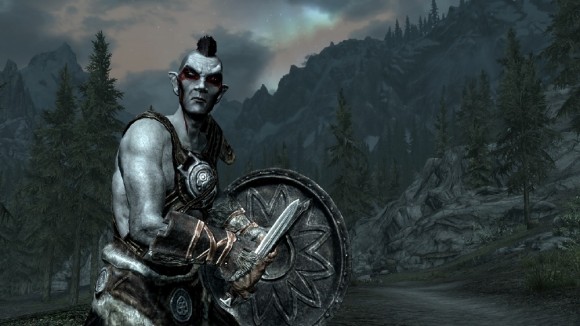
Previous players from the series will soon notice that Skyrim stands apart from its prequels, it presents itself as robust. In Oblivion, you only had to watch the screen a few minutes to see clipping issues, crazy AI or terrain that simply blocks your path too often. Skyrim too isn’t perfect; residents love blocking your path, trekking often leads to getting glued to a mountain where a re-load is necessary and when riding a horse, the frame-rate often needs time to catch-up but it’s been built to withstand the abuse from those who are eager to tempt fate, producing minor improvements. The only other negative of this title are the companions – don’t use them – they only set off traps in dungeons but they do carry things. Those who have played Fallout will know this may be handy after being weighed down.
Another delightful addition can be seen some 35 hours after cleaning out a dungeon and returning to the scene of the victory. There, precisely where they were left them with flames licking at their faces are the bandits who stood in the way. The dead remain visibly dead. Bodies don’t fade in mere moments like in your average shooter, further enhancing realism.
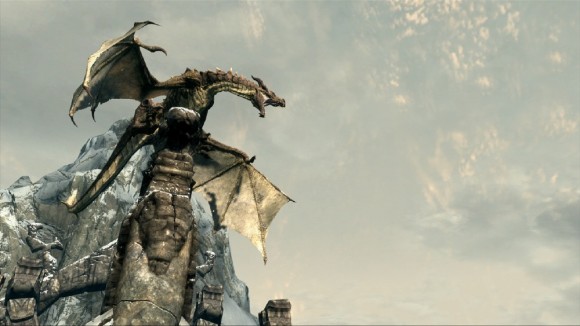
Skyrim is full of possibilities of epic proportion, culminating in years of medieval stories of dungeons and dragons (no princesses though), fantasy-fiction and visual creativity. Tolkien himself would have
been proud.
All Zombies Must Die


Zombies, they have seemingly managed to take over the world on a surprisingly frequent basis. Considering they don’t exist. Whilst just going down to The Winchester seems like a great plan to some, others would rather jump into action, get hold of some form of instrument and start attacking in the streets. Now the urge to grab a cricket bat might be overwhelming, even though you don’t even own one and haven’t played cricket since you were bullied into it by teachers at school, but just wait a second. What can a gamer really do?
A Gamer in Deadhill thinks he can save the world, or at least try. In essence, that’s where the story ends in All Zombies Must Die, there are a few bits and bobs that happen as you travel through the game, picking up other characters, such as A Girl, a Mad Scientist, some Aliens and Military people. Aside from these extra people who turn up in strategic places throughout the game, it’s pretty much 4 people against 6 billion zombies across the known world, trying to eat you.
Well, not just eat you, but get to you, tear you up and pretty much cause actual bodily harm, borderline manslaughter –they can’t be held accountable for their actions as they’re dead. They pretty much appear in all locations across Deadhill, from living rooms, to garages. Some pop up out of no-where, others from under the ground. Yet, Gamer is determined to escape from this living hell and the aim of the game is not only to kill the zombies, but to make it past certain check points in the game.
These check points are often left behind by the military and unless Gamer collects the right items from the area, he can’t get past. This isn’t a task that’s too hard to do, as there’s a fairly decent on-screen compass that’s constantly guiding you in the right direction. On most games, this would be a worrying lack of faith in the gamer, a trend that seems to have become the norm in this generation; however, as this is a “shoot-the-zombie” type game, it simply helps. This is due to the fact that whilst the items might be called, flower, they are hidden in a random room, in a bubble and aren’t easy to see with the naked eye.
Not only this, but some of the single player missions are not only ruthless harsh for mistakes. A single death can lead to the entire level being reset, if you manage to get that far in the first place. Not only that, but some of the missions require zombies to be massacred in strange places, this would be fine but actually getting to these places means getting stuck behind walls or being unable to see yourself. Therefore death is not only inevitable but will cause gamers to become apoplectic with rage.
All Zombies Must Die is a highly stylised game, with not only classic pop-culture references but it also looks and feels like a comic book or flash cartoon come to life. This lends itself well to gamers; however, the camera angles really let the title down. Whilst an apocalyptic world is a great setting for pretty much anything with an “otherworldly” element in it, the fires, half destroyed buildings and general debris are a nightmare for games that have limited ability to tilt the camera at the players will.
The real appeal in All Zombies Must Die is in the multiplayer action, once a few rounds of the single player mode have been completed, the secondary characters become available to select in the multiplayer mode. Until then, it’s just the might of the military to back Gamer up; of course, the military don’t actually make much of a different in the multiplayer mode. Everyone has the same stats to start off with and this means playing from Level 1. Whilst multiplayer is where the real fun is, it again is limited by the lack of online play, it’s strictly local multiplayer only. So whilst it’s great seeing your friends get angrier and in turn drunk, it’s a little sad and lonely for the friendless out there.
Unfortunately for many, Level 1 is where All Zombies Must Die will start and end. Ultimately it’s the very style and nature of gameplay that will cause the off switch to be used by many gamers. Fortunately it’s not due to the challenge the game produces, the difficulty curve is very well mapped. It’s down to the repetitive nature of the game, with Pokémon training, there’s a visible reward and whilst walking around forests battling Metapods is dull, it’s ultimately got a goal. All Zombies Must Die’s goal is far too masked for many to reach the end of the level. Whilst it’s a great game to play in a group of people, or at a convention like we all had the pleasure of doing this year, it’s very repetitive.
Ultimately All Zombies Must Die falls into the trap that many twin-sticked shooters do, they’re trying to diversify a genre of game that’s not only saturated, but so simplistic in the first place that diversification is near impossible.
Sonic CD


Playing games on CDs isn’t something that’s often accredited with the early 90s, many people only remember big, plastic cartridges that were either black or some off shade of gray. Yes, the SEGA Mega Drive and Super Nintendo Entertainment System are the two main consoles that people remember; yet, these aren’t the only systems to exist. Much like the Stellaview that was only released in Japan for the SNES, SEGA created the Mega CD. This piece of kit was an addon that could be plugged into the Mega Drive and predictably allowed the console to play CD games.
This system was made available worldwide; however, it was a huge flop with fewer than 10% of its original shipment to Europe being sold in the first six months. Yet, SEGA persisted and created what is often lauded as the best and forgotten Sonic title: Sonic the Hedgehog CD. What’s become standard in most early Sonic games has been dispelled in Sonic CD.
For many this will be the first occasion Sonic CD is played and it’s vital to understand that if you’re a seasoned Sonic gamer, this title will not only be a little frustrating, but it will also appear painfully short. This is where Sonic CD takes a notable departure from the classic Sonic formula of the day, whereas in Sonic 1, it’s very easy to simply hold the right d-Pad and jump every now and again for 90% of the title, Sonic CD requires a little less lateral thinking and far more skill.
Whilst the ability to simply hit right and jump does still exist, this will not only lead you to an untimely death, it will also create a dissatisfying ending, as the levels are a little short if you’re not actively seeking out additional elements. The underlying excuse for Sonic CD to juxtapose against its counterparts is due to the time travel that takes place in-level. Whilst there’s still a severe lack of plot, Sonic is able to play in two different points of time: the “Future” or the “Past”.
Each of these eras of time have very different level design and the “Future” levels tend to be more challenging than the Past as Sonic is able to alter the course of history. This is done by destroying certain elements of the game in the Past era, before Dr. Robotnik can start bothering the world. However, getting into the past is not as easy as striking a sword into a pedestal. Littered throughout the levels are signs that need to be ran through. Once Sonic has ran past the signs, should he manage to get to top speed for a few seconds he’ll be teleported back in time.
As easy as this sounds, it’s far more challenging than it has been on any Sonic game in the history of the franchise and that includes Sonic Spinball, Sonic 3D and even the Black Knight. In the Future, there’s not a lot of areas where maximum velocity can be reached and even where there are, Sonic’s normally just trying to get to top speed before he lands on a spring that sends him flying into spikes or a bottomless pit. In the Past, there are so many triggers to push you into the Future you’re likely to accidently hit one and end up in the Future in a furore of explicit words. The level design in Sonic CD is not only beautiful, fragmented and erratic, but unforgiving and ruthless.
Fragmented and erratic are usually phrases that are keyed to drugged up celebrities, ageing relatives and the odd eccentric woman with too many cats. However, in Sonic CD, this is perfect as the level design has been done in a way that makes even an experienced player think twice about what they’re doing.
The port from the Mega CD to the Xbox Live, PlayStation Network and mobile devices has not only been done well, but with love. This is mostly due to Christian Whitehead. This Australian coder had previously presented a jailbroken, fan-hacked version of Sonic CD, for free, across the internet a few years ago. It only took a few weeks for SEGA to realise that the fan-scene was producing better results than their in house teams. This is a problem that appears across the industry and is not just limited to legacy companies. Rather than sue Whitehead into the grave, they’ve employed him.
Whereby Sonic CD has some collision issues, these have been refined and for the most part removed in this edition of Sonic CD. Not only that, but where most re-releases aren’t given a real HD treatment, Sonic CD has been treated with care and has been designed to display correctly on our new fangled, widescreen, HD sets. There are no stretched pixels in this game. Alongside these changes, there are also options to play the game with the Japanese or European soundtrack, play with a legendary orange character and earn achievements.
Graphically, the game is inspired by Sonic 1, with Sonic looking at his most classic and the controls are closest to that game. With the spin dash from Sonic 2 stolen and implemented in the Sonic CD way. The levels are lengthy and very bright; it feels like a cross between Casino Zone, Star Light Zone and Oil Ocean Zone. Whilst this isn’t a bad thing, it’s an epileptic’s nightmare and does make the game feel more retro than it needs to be.
Sonic CD is not only a departure from Sonic 1, but is an anomaly in the entire franchise as it takes a very different approach to a Sonic game. It’s a title that’s carefully crafted and yet erratic, something that’s painfully short for the casual player, but to those who play games is a twofor. Sonic CD is a thing of beauty, but is not just an iceberg; it’s got the substance to keep the gamer gaming.
Assassin’s Creed Revelations


Assassin’s Creed: a tale of genetic time travel, ancient conspiracy theories and slow motion violence. It’s arguably one of the most confusing series ever created due to its over-complicated storyline. Assassin’s Creed Revelations stays true to form but does throw up a few surprises along the way. Being the fourth in the series in as little a time as three years, players could have expected there to be the same old tricks that made the first three such successes and new features to be stored away for the proposed Assassin’s Creed Three. But they would be wrong.
To those who have stayed faithful to the series, many areas will be instantly recognisable. Revelations carries much of the same visuals, sounds and game-play, but is fresh and has an air of originality. Ezio and Altair are still free-running around a city, returning to their roles as Assassins and enjoying improved game-play such as the ‘Counter Steal’, which means picking up booty after battles is a thing of the past. Both Assassins are fluidly shanking up the Templars and making the crime rate in Renaissance Constantinople almost as high as London’s today. The familiarity of the game is a strong likeable factor but also a fatal flaw. The ridiculously long slow-motion introduction is just a re-hash of previous games and there is a strong possibility it could seem dull to those who have stuck by the series. This doesn’t last long though.
New features, such as Ezio’s Ottoman Hook, enabling faster climbing abilities sit comfortably alongside fan favourites like doing favours for historical folk. Revelations presents players with strategic mini-games such as bomb-crafting, first-person levels and extra combat abilities; these all cater for different player styles – bolt in and blast ‘em up or stealthily setting up traps. By the end of this game, players are going to be left wondering where their life has gone; it is genuinely the most jam-packed of the series. Revelations is the most wide-reaching and immersive due to its shorter side quests and campaigns; this keeps repetition at a minimum. Ubisoft have cleverly distracted from the main plot by hiding these quests down the cosmopolitan side streets of beautiful Constantinople, making players discover more of the map at the same time, creating a dual purpose.
In discovering more of the city, there are plenty of people to meet. Mercenaries, thieves and Romani people are just to name a few. Each group has their own missions and challenges that could keep any gamer busy for a few hours. However, the sheer number of missions can seem overpowering but make the game worth its money. The prize of most comical mission goes to Ezio’s dispatch of a group of Italian minstrels, just before robbing them then singing down the street in their clothing. However, it is a shame that many of these missions are just like Grand Theft Auto’s minor and mediocre day-to-day challenges but a bit more historical. Players end up fetching and killing repetitively – much alike in Brotherhood. Ok, maybe there are some repetitive features…
However, Brotherhood has influenced Revelations in an exciting way. The main story demonstrates the exotic missions exhibited in Brotherhood and takes them to another level. Its linear secret locations and Da-Vinci themed scenery have been woven delicately into the new title flawlessly. The main story is one adventure after another – the game in effect becomes a playground where players learn to become effective killing machines whilst collecting keys to tie together the over-thought-out plot. Altair’s flashback missions, in particular, give the player a chance to daringly escape from burning ships and horse-and-carriage battles. His short-lived role in Revelations is arguably the most interesting, spanning a lifetime of wrist-knifing.
Although the lesser protagonist, Desmond, is still in a coma; he is awaiting his chance to be a modern-day assassin. Desmond is trapped within the Animus’ memory banks, stranded on a subconsciously computer-generated island. Sinister memories are discovered from Subject 16, an interesting spin-off for the modern day portion of the game but players should be prepared for this section to disappoint; it hasn’t been well prepared for and can lead to further plot confusion. It provides the dullest game intervention so far.
Players collect code fragments as Ezio, for Desmond to unlock new areas on the inescapable island. These take the form of first-person narrated puzzles that involve digital recreations of Desmond’s memories. To do this, as complicated as it sounds, you just have to move about a few rectangular blocks and ramps but these are not a patch on the hieroglyphic puzzles of Assassin’s Creed One and Brotherhood.
Ageing Ezio’s final steps are assured forever in Revelations; it is a shame but an inevitable one. There is only so much you can do with one character. The place of Ezio’s final chapter, Constantinople, is as varied a setting as players could hope for and articulately created. Its rickety wooden buildings create perfect cover for stealth portions of Ezio’s adventure. The metropolis’ zip-line rooftops and parachutes make traversing the city a pleasure and finding keys in underground canyons and secret cisterns makes a pleasant change to the current series. Quick tip: Jump off Galata Tower, the tallest in the game, it’s worth it.
For the multiplayer you need to be as ‘cunning as a fox that has just been appointed as Professor of Cunning at Oxford University’. The bigger and better online modes consist of cat-and-mouse games that create an air of tense competition among players. It also provides an alternative to most of the multiplayer options in varying games on the market. The multiplayer just adds to the value of the game and how extensive it is.
Assassin’s Creed Revelations is a must for any fan and a possible excursion for those who have yet to discover the series. The game is basically a tale of finding keys to tie together the three main player’s over-worked plot but that shouldn’t put players off. It is a fast-paced, cinematic feast for the eyes and a challenging title for most competent players.
Batman: Arkham Asylum

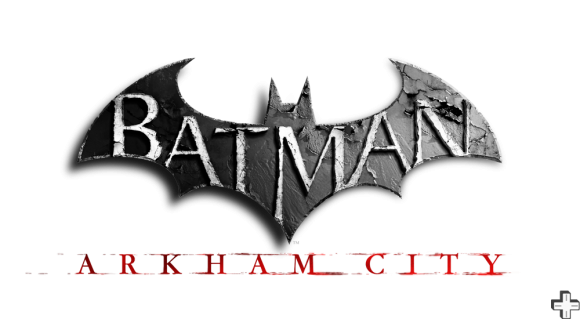
He’s one of the darkest anti-heroes to ever exist, scaring generations of both adults and children all over the world. Through the medium of comics, graphic novels, films, books and TV, Batman has become a key part of the entertainment industry. Then Rocksteady presented us with Batman: Arkham Asylum. An eclectic masterpiece that perfected the ‘Dark Knight’ persona and left an experience that was waited on by bat-lovers everywhere. Waiting in the wings, developers had already begun work on the grander Batman: Arkham City and it is by no means a disappointment.
A year has passed since the events on Arkham Island; the Joker has been poisoned by a substance known as Titan and continues to lurk in the shadows. The asylum remains overrun with hordes of criminals from Gotham – a large area of it has been cordoned off to pen in these crooks. Psychotic psychiatrist Hugo Strange and his mercenaries both words run the area and within it are three factions of men– Harvey ‘Two Face’ Dent’s, the Penguin’s and our friend, the Joker’s. All are hungry for power. The game starts with disfigured Dent trying to execute the slinky, PVC-clad Catwoman. As crime-fighters do, Batman intervenes and uncovers with it a plot – Protocol 10 – condemning Gotham into a sinister oblivion. And so a night of judgement begins, again…
As the game begins, players are immediately hit with the stunning visuals in Arkham City. The graphics have never looked as dark and ominous. The grime of Gotham City is brought to life in realistic ‘graphic novel’ style but may mean you have to brighten your TV set to see what’s going on. When given the chance to soar across the skies, the player can realise just how expansive the City is. The architecture of the decrepit and decaying Gotham shows itself in new lights around every street corner.
In rescuing Catwoman, Batman soon encounters the newly improved combat system. Where Asylum had previously broken boundaries in creating the most dynamic fighting system of its kind, Arkham City presents us with a new intuition born into combat; Batman chooses who to attack next based on who is closest and who is more threatening. However, Batman can have a tendency to become disorientated and hit the wrong target at times, leading the player to suffer a baseball bat to the head. Although, Batman could not be complete without his utility belt and this comes with many new and upgraded gadgets. Accessing these gadgets couldn’t be easier – tap the directional pad. This isn’t to say that players aren’t significantly challenged; thugs come at you with baseball bats, stun guns, firearms, knives and with their own protective body armour. They are possibly the most well equipped scum to walk the planet. Luckily, Batman’s dwindling health bar can be topped up with XP created by jaw-dropping combos. Articulated button stomping is required for well-timed attacks that can make or break even the simplest of fights – even on Normal, players are presented a challenge.
Stealth is key to the Batman experience, which is delivered in ‘Metal Gear Solid’ quantities. The environment has been perfectly created so players can stalk their prey and then bring down ruthless brutality on unknowing villains but they don’t take it lying down. Gone are the irritating and repetitive Asylum thugs. Thugs come equipped with thermal goggles lighting up the dingy ceilings to reveal Bat-shaped figures lurking for an attack and detonation devices are planted on innocent-looking gargoyles. Even proximity mines are placed next to villains so no take-downs can be acted out. XP can be found in overcoming these issues and this, in turn, will provide Waynetech upgrades. Detective Mode is still very much in use too, now called Augmented Reality mode, it can be a tad over empowering and over-used but still works well within this type of stealth-related game.
Various super villains present a world of pain to Batman; each villain has been characteristically brought to life through stunning visuals and brilliant voice acting, especially Mark Hamill as the Joker. The vicious taunting will soon have players throwing their controllers about the room out of sheer frustration but worthy of dying many times over.
Another playable character is Catwoman, her sexy interventions throughout the story increases the sexual tension between her and Bat-boy every time. Don’t be mistaken for thinking this is just an add-on; she has her own agenda, Riddler trophies and combat combinations to perfect. This makes the characters just that little bit more believable and vulnerable.
Once again, the Riddler has left his mark all over the City, now presenting the player with Revenge Challenge maps. These are unlocked through the game and give players a chance to upgrade and enhance their skills. Riddler trophies can still be sought out during play but are a little bit more difficult to find this time round. Character bios and statuettes can also be collected amongst each level, adding to the collectable content available – a hoarder’s paradise. This makes the 15 hour narrative a bit more drawn out. It is always worth returning to certain areas too, as bonus cut-scenes and dialogues present themselves such as the opportunity to sucker punch Penguin and finding Scarecrow’s discarded remnants. Excitingly, this game never really ends – it is a dark, twisted fairytale whereby play can continue with Batman or Catwoman.
Overall, Arkham City builds up a sense of righteousness in the player, there is a sense that justice has been served across Gotham with every thug, major villain and mission taken down. Every trophy collected, ever challenge unlocked and all the upgrades collected, makes Arkham City feel wholesome. This game has no rival for believability, aesthetics, game-play and soundtrack. With enough content to keep the inhabitants of Arkham Asylum busy for the rest of their life sentences, you can bet your Bat pole on it that there’ll be another thrilling sequel to this masterpiece.


